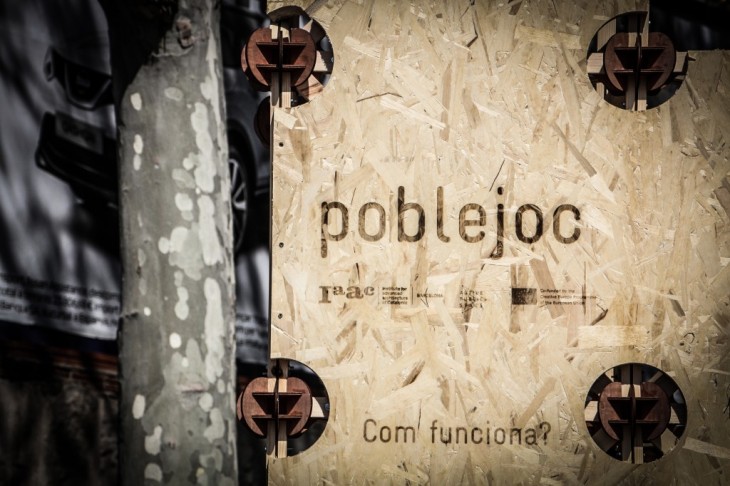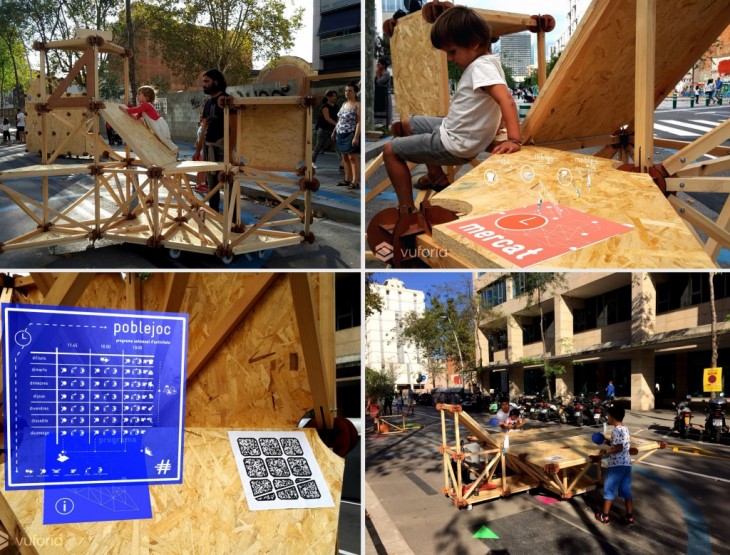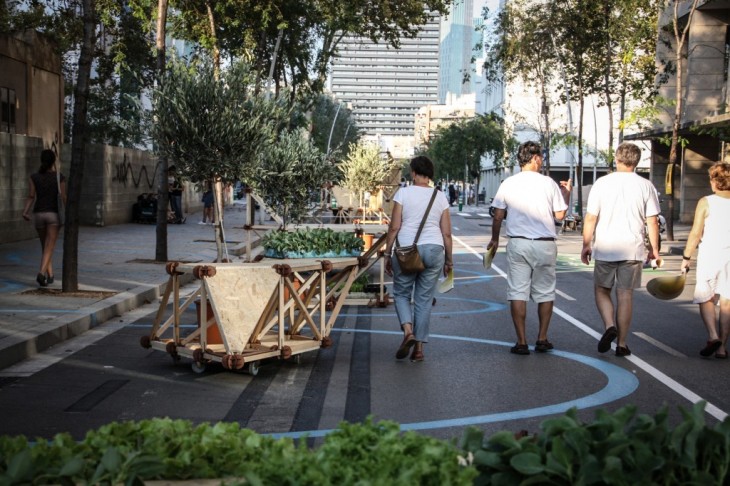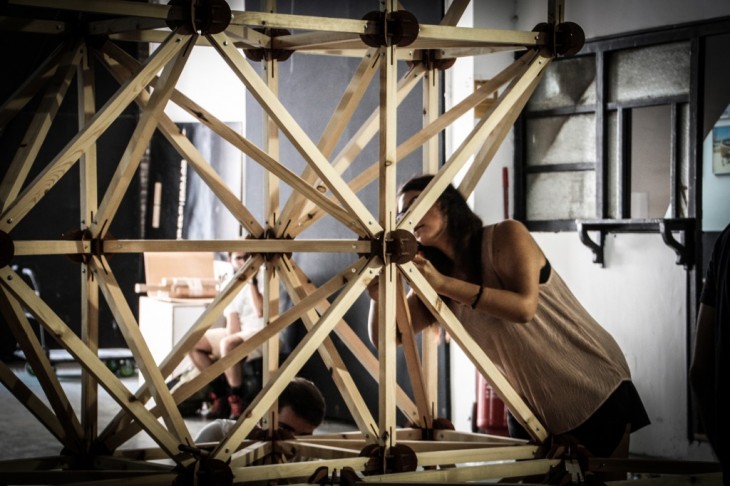In which ways can people have a more active role in the design of their spaces? How technology can enhance our capability of understanding and interact with our space?
Poblejoc, an interactive installation conceived during the Active Public Space workshop, has been designed as an Urban Game with the aim of activating public space.
Poblejoc was created in the framework of the #Superilla (Super-block) workshop, a pilot test of the Superilla plan for Barcelona, that was developed in the Sant Martí district. The plan aims to close to traffic a part of the city’s roads, allowing to use these new pedestrianalised areas as public space.

Poblejoc Urban Game in Poblenou, Barcelona
A bench incorporating a tree, an urban orchard, a market stall, a ping pong table and a screen, all mobile (on wheels), are the elements that were positioned in the Sant Martí district. They can be moved by the users creating different configurations, reflecting the citizens’ desires in terms of design superblock public space, hence activating it.
The five urban furniture prototypes of the Poblejoc installation were developed during a one-week workshop tutored by IAAC & Noumena, where 16 international students designed and fabricated the wooden structures.

Poblejoc users playing and interacting with the installation
The space configurations are mapped through the use of a drone, in order to extract data on the space dynamics. Moreover, downloading the Poblejoc app, users can obtain information, through augmented reality, on each furniture module. Technology is used within the installation with the aim of further enhancing citizen’s engagement.

Poblejoc functional elements in Poblenou, Barcelona
The installation has been developed in the framework of APS Active Public Space, an EU co-founded project with the aim of developing knowledge on Active Public Space.

Poblejoc functional elements fabrication at IAAC
The project is oriented to finding solutions, taking as starting point the following assumption: the public space we inhabit today was basically constructed prior or during the Industrial Revolution, however the Information Society is now beginning to bring new principles and technologies with which to rethink the functioning and structure of the streets, avenues, squares and parks.
Public space can now be transformed in Active Public Space, fostering people interaction with flows of energy, materials, services and finances to catalyse sustainable economic development, resilience, and high quality of life.
To learn more about the project visit the official web page of Active Public Space.